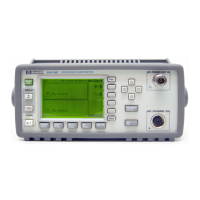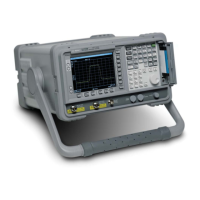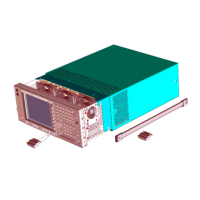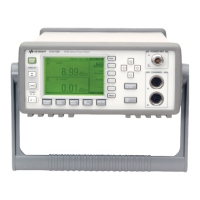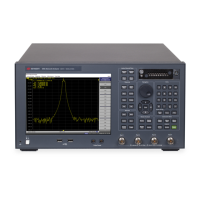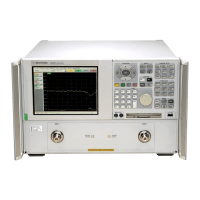26 Chapter 1
Introduction and Measurement Theory
Cable Impedance and Structural Return Loss Measurement Theory
but rather a way to determine measurement guard band, and to understand how
closely to expect measurements to compare on objects measured on different
systems.
The errors that can occur in a reflection measurement are reflection tracking (or
frequency response), T, source match, Γ
M
, and directivity, D. The total error in a
measurement can be shown to be
Equation 14
where Γ
DUT
is the reflection response of the DUT.
Error correction techniques can effectively remove the effects of tracking. Also,
source match effects are small if Γ
DUT
is small. This leaves directivity as the largest
error term in the reflection measurement. The causes and effects of these error terms
will be described for each of the measurement methodologies.
For variable bridge measurements, the directivity of the bridge is the major error
term. One-port vector error correction reduces the effects of tracking and source
match, and improves directivity. The directivity after error correction is set by the
return loss of the precision load, specified to be better than 49 dB at 1 GHz.
However, the directivity is only well known at the nominal impedance of the
system, and the directivity at other impedances should be assumed to be that
specified by the manufacturer. For best performance, the bridge should be connected
directly to the cable connector, with no intervening cable in between.
The directivity of the bridge could be determined at impedances other than 75 ohms,
by changing the impedance and measuring the resulting values. This can be done by
changing the reference impedance to the new value, say 76 ohms, changing the
bridge to that value, and measuring the impedance on a Smith chart display. The
difference from exactly 75 ohms represents the directivity at that impedance.
For fixed bridge methods, the reflection port is often connected to the cable
connector through a length of test lead. A one-port calibration is performed at the
end of the test lead. The directivity will again be set by the load, but any change in
return loss of the test lead due to flexing will degrade the directivity of the
measurement system. In both fixed and variable bridge measurements, the
repeatability and noise floor of the analyzer may limit the system measurement. A
convenient way to determine the limitation of the measurement system is to perform
a calibration, make the desired measurement, then re-connect the load to check the
effective directivity. A very good result will be better than
−80 dB return loss of the load. Typically, flexure in the test leads, connector
Γ
MEAS
TD
Γ
DUT
()
1 Γ
M
Γ
DUT
–()
-----------------------------------
+⋅=
